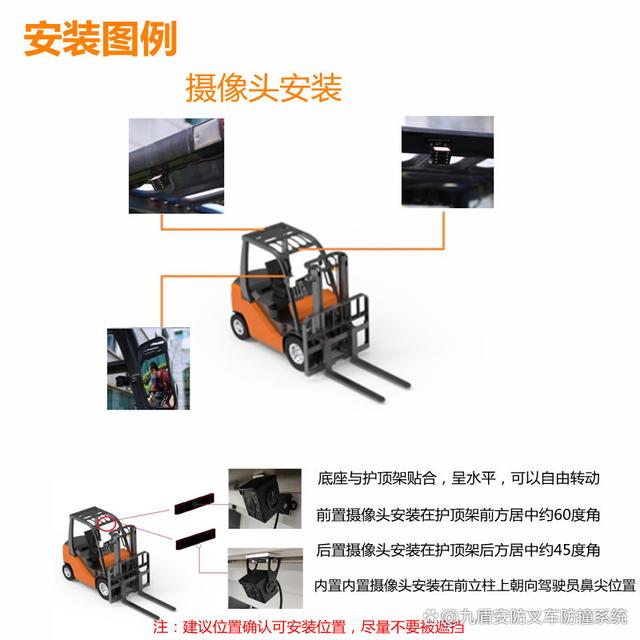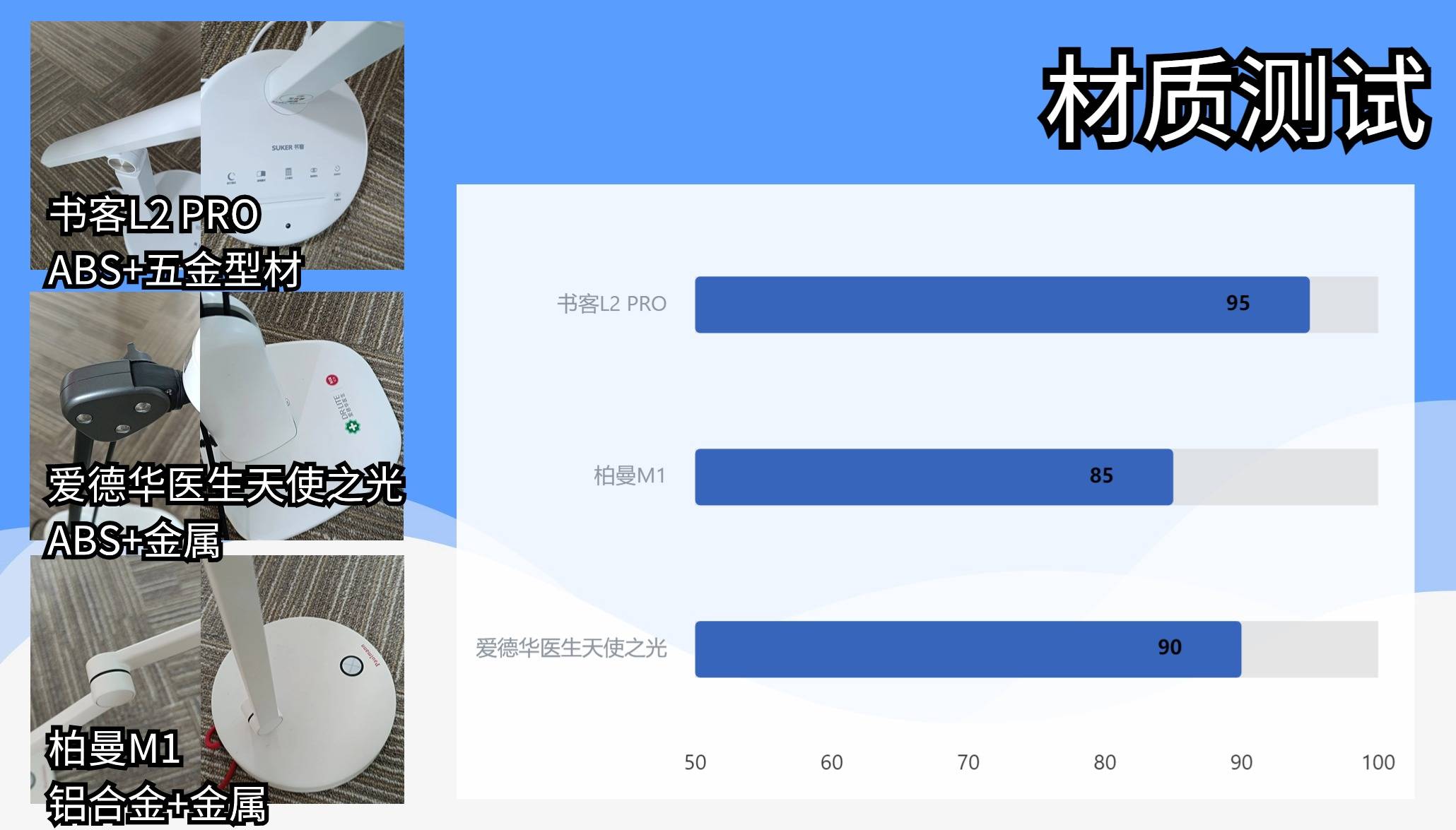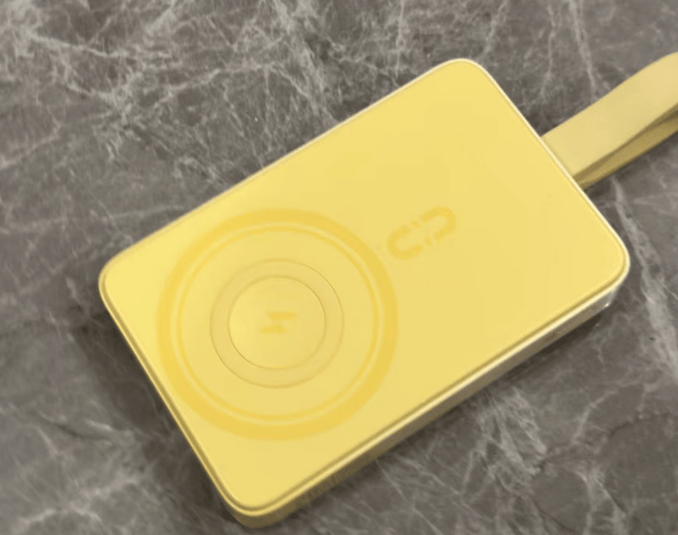目录
- 前言
- 一、电量、温度、缺纸检测
- 1.电量检测
- 2.针头温度检测
- 3.缺纸检测
- 二、蓝牙APP通信打印
- 1.蓝牙初始化
- 2.APP通信打印
- 三、FreeRTOS任务整合
前言
喵喵蓝牙热敏打印机(上)
内容有点多,就分为了上下两篇。
一、电量、温度、缺纸检测
先启动一下串口通信,方便后续操作。
Serial.begin(115200);
1.电量检测
原理图:


逻辑分析:电池电量检测可以通过检测POWER_ADC的分压值来转换。
这个里的分压值是个模拟变化量,所以我们要用到ADC模数转换。
代码如下:
#include <adc.h>
#define POWER_ADC 34//Arduino IDE中为ESP32 配置的ADC默认环境就能
//用,所以直接定义一个引脚即可,不用初始化。
int battery;
int batt_all;
int get_battery_adc()
{
int data = 0;
//获取IO口电压值
data = analogReadMilliVolts(POWER_ADC);//直接通过内置函数获取电压值
return data;
}
void Deal_battery_adc()
{
battery = map(get_battery_adc(),1650,2100,0,100);
for (int i = 0; i < 10; i++)//为了使获取的电压值比较稳定,就先获取10个,然后取平均值。
{
batt_all+=battery;
delay(1000);
}
battery_fina=batt_all/10;
batt_all=0;
printf("电量:%d\r\n",batt_all/10);
}

重点解析:map(get_battery_adc(),1650,2100,0,100);
map函数主要就是作为一个映射功能。
由于该硬件使用的是18650电池,该电池满电4.2v,终止电压2.75v。但由于该硬件的步进电机到3.3v就驱动不了了,所以ADC获取的电压模拟量会在1650和2100之间(实际上是3300和4200之间,但两个10k电阻分压一半)。

2.针头温度检测


uint8_t head_temp = 23; //打印头温度
uint16_t temp_adc;
void HeatTemp() {
temp_adc = analogRead(PIN_TEMP);
Serial.print("打印头温度ADC:"); Serial.println(temp_adc);
head_temp = 23;
}
直接读即可
3.缺纸检测


电路看着很复杂,但其实原理很简单,直接读35引脚,为1就是缺纸,为0就是有纸。
int NO_Paper;
void read_paper_statue()
{
if(digitalRead(PRINT) == 1){
Serial.printf("缺纸1111\n");
NO_Paper=1;
}else{
Serial.printf("有纸0000\n");
NO_Paper=0;
}
}
二、蓝牙APP通信打印
1.蓝牙初始化
这部分主要就是设置个波特率顺便初始化一下SPI
#include <BluetoothSerial.h>
void init_Blue()
{
Serial.begin(115200);
print_Blue_Data = (uint8_t*)malloc(50 * 1024);
printerSPI.begin(PIN_CLK, -1, PIN_DI, -1);
printerSPI.setFrequency(2000000);
//print_Blue_Data = (uint8_t *)malloc(3 * 1024 * 1024);
}
2.APP通信打印
这一部分就是全力依靠樱猫大佬的代码了
上位机和设备建立链接时需要发送的指令和顺序如下:
1.上位机发送 24 指令,设置 CRC 校验的密钥,固定四字节 crcKey = 0x35769521
2.发送 10 指令获取设备的 SN 码,需要蓝牙返回指定的 SN 码:“P1001705253855”
3.上位机发送 66 指令,设备返回固定字符串信息:”BK3432”,蓝牙设备型号
4.上位机发送 127 指令,设备返回固定信息:{0x76, 0x33, 0x2e, 0x33, 0x38, 0x2e, 0x31, 0x39,
0, 0, 0, 0};
5.上位机发送 25 指令,设定打印机加热时间(热密度)
6.上位机发送 48 指令,请求设备名称,设备返回自己设定的名字
7.上位机发送 16 指令,请求设备电池信息,设备返回当前电压
8.上位机发送 31 指令,请求关机时间,设备返回设定的关机时间默认 3600 分钟
9.上位机发送 4 指令,获取打印机版本信息,默认版本 2.0.1,设备返回{0x01, 0x00, 0x02};
10.上位机发送 44 指令,设定纸张类型,设备纸张固定,不需要修改。
上述流程中,需要注意设备返回的数据,在开发蓝牙打印机的功能时,需要正确返回数据,否则会导致设备连接失败,并且每条指令在接受完成之后,设备都需要进行回复,回复内容固定为 00,类型根据接收到的类型来定。如果指令没有正确回应,软件会重复发送直至超时。
上位机和设备之间传输打印数据发送的指令和数据流程如下:
1.打印时会先发送两次 25 指令用以设置打印热密度,也就是打印加热时间。
2.发送 26(进料线)指令,也就是开始打印指令
3.然后发送 0 指令,开始传输数据,分包发送打印的数据,一包最大 1920
4.数据发送完毕之后,会再次发送 26 指令,收到之后,打印机开始打印数据。
指令定义:
#define PRINT_DATA 0 // 打印数据
#define PRINT_DATA_COMPRESS 1 // 打印数据压缩
#define FIRMWARE_DATA 2 // 固件数据
#define USB_UPDATE_FIRMWARE 3 // USB更新固件
#define GET_VERSION 4 // 获取版本
#define SENT_VERSION 5 // 发送版本
#define GET_MODEL 6 // 获取模式
#define SENT_MODEL 7 // 发送模式
#define GET_BT_MAC 8 // 获取蓝牙MAC
#define SENT_BT_MAC 9 // 发送蓝牙MAC
#define GET_SN 10 // 获取SN码
#define SENT_SN 11 // 发送SN码
#define GET_STATUS 12 // 获取状态
#define SENT_STATUS 13 // 发送状态
#define GET_VOLTAGE 14 // 获取电压
#define SENT_VOLTAGE 15 // 发送电压
#define GET_BAT_STATUS 16 // 获取蓝牙状态
#define SENT_BAT_STATUS 17 // 发送蓝牙状态
#define GET_TEMP 18 // 获取打印头温度
#define SENT_TEMP 19 // 发送打印头温度
#define SET_FACTORY_STATUS 20 // 设置出厂状态
#define GET_FACTORY_STATUS 21 // 获取出厂状态
#define SENT_FACTORY_STATUS 22 // 发送出厂状态
#define SENT_BT_STATUS 23 // 发送蓝牙状态
#define SET_CRC_KEY 24 // 设置CRC密钥
#define SET_HEAT_DENSITY 25 // 设定热密度
#define FEED_LINE 26 // 进料线
#define PRINT_TEST_PAGE 27 // 打印测试页
#define GET_HEAT_DENSITY 28 // 获取热密度
#define SENT_HEAT_DENSITY 29 // 发送热密度
#define SET_POWER_DOWN_TIME 30 // 设定关机时间
#define GET_POWER_DOWN_TIME 31 // 获取断电时间
#define SENT_POWER_DOWN_TIME 32 // 发送断电时间
#define FEED_TO_HEAD_LINE 33 // 送至标题行
#define PRINT_DEFAULT_PARA 34 // 打印默认参数
#define GET_BOARD_VERSION 35 // 获取板子版本
#define SENT_BOARD_VERSION 36 // 发送板子版本
#define GET_HW_INFO 37 // 获取硬件信息
#define SENT_HW_INFO 38 // 发送硬件信息
#define SET_MAX_GAP_LENGTH 39 // 设定最大间隙长度
#define GET_MAX_GAP_LENGTH 40 // 获取最大间隙长度
#define SENT_MAX_GAP_LENGTH 41 // 发送最大间隙长度
#define GET_PAPER_TYPE 42 // 获取纸张类型
#define SENT_PAPER_TYPE 43 // 发送纸张类型
#define SET_PAPER_TYPE 44 // 设置纸张类型
#define GET_COUNTRY_NAME 45 // 获取国家名称
#define SENT_COUNTRY_NAME 46 // 发送国家名称
#define DISCONNECT_BT 47 // 断开蓝牙
#define GET_DEV_NAME 48 // 获取设备名称
#define SENT_DEV_NAME 49 // 发送设备名称
#define CMD_39 57
#define CMD_40 64
#define CMD_41 65
#define CMD_42 66
#define CMD_43 67
#define CMD_7F 127
#define CMD_80 128
#define CMD_81 129
#define CMD_82 130
上述通信需要用到CRC数据校验
crc.c
/**
* \file
* Functions and types for CRC checks.
*
* Generated on Tue Jan 7 07:33:25 2020
* by pycrc v0.9.2, https://pycrc.org
* using the configuration:
* - Width = 32
* - Poly = 0x04c11db7
* - XorIn = 0xffffffff
* - ReflectIn = True
* - XorOut = 0xffffffff
* - ReflectOut = True
* - Algorithm = table-driven
*/
#include "crc.h" /* include the header file generated with pycrc */
#include <stdlib.h>
#include <stdint.h>
/**
* Static table used for the table_driven implementation.
*/
static const crc_t crc_table[256] = {
0x00000000, 0x77073096, 0xee0e612c, 0x990951ba, 0x076dc419, 0x706af48f, 0xe963a535, 0x9e6495a3,
0x0edb8832, 0x79dcb8a4, 0xe0d5e91e, 0x97d2d988, 0x09b64c2b, 0x7eb17cbd, 0xe7b82d07, 0x90bf1d91,
0x1db71064, 0x6ab020f2, 0xf3b97148, 0x84be41de, 0x1adad47d, 0x6ddde4eb, 0xf4d4b551, 0x83d385c7,
0x136c9856, 0x646ba8c0, 0xfd62f97a, 0x8a65c9ec, 0x14015c4f, 0x63066cd9, 0xfa0f3d63, 0x8d080df5,
0x3b6e20c8, 0x4c69105e, 0xd56041e4, 0xa2677172, 0x3c03e4d1, 0x4b04d447, 0xd20d85fd, 0xa50ab56b,
0x35b5a8fa, 0x42b2986c, 0xdbbbc9d6, 0xacbcf940, 0x32d86ce3, 0x45df5c75, 0xdcd60dcf, 0xabd13d59,
0x26d930ac, 0x51de003a, 0xc8d75180, 0xbfd06116, 0x21b4f4b5, 0x56b3c423, 0xcfba9599, 0xb8bda50f,
0x2802b89e, 0x5f058808, 0xc60cd9b2, 0xb10be924, 0x2f6f7c87, 0x58684c11, 0xc1611dab, 0xb6662d3d,
0x76dc4190, 0x01db7106, 0x98d220bc, 0xefd5102a, 0x71b18589, 0x06b6b51f, 0x9fbfe4a5, 0xe8b8d433,
0x7807c9a2, 0x0f00f934, 0x9609a88e, 0xe10e9818, 0x7f6a0dbb, 0x086d3d2d, 0x91646c97, 0xe6635c01,
0x6b6b51f4, 0x1c6c6162, 0x856530d8, 0xf262004e, 0x6c0695ed, 0x1b01a57b, 0x8208f4c1, 0xf50fc457,
0x65b0d9c6, 0x12b7e950, 0x8bbeb8ea, 0xfcb9887c, 0x62dd1ddf, 0x15da2d49, 0x8cd37cf3, 0xfbd44c65,
0x4db26158, 0x3ab551ce, 0xa3bc0074, 0xd4bb30e2, 0x4adfa541, 0x3dd895d7, 0xa4d1c46d, 0xd3d6f4fb,
0x4369e96a, 0x346ed9fc, 0xad678846, 0xda60b8d0, 0x44042d73, 0x33031de5, 0xaa0a4c5f, 0xdd0d7cc9,
0x5005713c, 0x270241aa, 0xbe0b1010, 0xc90c2086, 0x5768b525, 0x206f85b3, 0xb966d409, 0xce61e49f,
0x5edef90e, 0x29d9c998, 0xb0d09822, 0xc7d7a8b4, 0x59b33d17, 0x2eb40d81, 0xb7bd5c3b, 0xc0ba6cad,
0xedb88320, 0x9abfb3b6, 0x03b6e20c, 0x74b1d29a, 0xead54739, 0x9dd277af, 0x04db2615, 0x73dc1683,
0xe3630b12, 0x94643b84, 0x0d6d6a3e, 0x7a6a5aa8, 0xe40ecf0b, 0x9309ff9d, 0x0a00ae27, 0x7d079eb1,
0xf00f9344, 0x8708a3d2, 0x1e01f268, 0x6906c2fe, 0xf762575d, 0x806567cb, 0x196c3671, 0x6e6b06e7,
0xfed41b76, 0x89d32be0, 0x10da7a5a, 0x67dd4acc, 0xf9b9df6f, 0x8ebeeff9, 0x17b7be43, 0x60b08ed5,
0xd6d6a3e8, 0xa1d1937e, 0x38d8c2c4, 0x4fdff252, 0xd1bb67f1, 0xa6bc5767, 0x3fb506dd, 0x48b2364b,
0xd80d2bda, 0xaf0a1b4c, 0x36034af6, 0x41047a60, 0xdf60efc3, 0xa867df55, 0x316e8eef, 0x4669be79,
0xcb61b38c, 0xbc66831a, 0x256fd2a0, 0x5268e236, 0xcc0c7795, 0xbb0b4703, 0x220216b9, 0x5505262f,
0xc5ba3bbe, 0xb2bd0b28, 0x2bb45a92, 0x5cb36a04, 0xc2d7ffa7, 0xb5d0cf31, 0x2cd99e8b, 0x5bdeae1d,
0x9b64c2b0, 0xec63f226, 0x756aa39c, 0x026d930a, 0x9c0906a9, 0xeb0e363f, 0x72076785, 0x05005713,
0x95bf4a82, 0xe2b87a14, 0x7bb12bae, 0x0cb61b38, 0x92d28e9b, 0xe5d5be0d, 0x7cdcefb7, 0x0bdbdf21,
0x86d3d2d4, 0xf1d4e242, 0x68ddb3f8, 0x1fda836e, 0x81be16cd, 0xf6b9265b, 0x6fb077e1, 0x18b74777,
0x88085ae6, 0xff0f6a70, 0x66063bca, 0x11010b5c, 0x8f659eff, 0xf862ae69, 0x616bffd3, 0x166ccf45,
0xa00ae278, 0xd70dd2ee, 0x4e048354, 0x3903b3c2, 0xa7672661, 0xd06016f7, 0x4969474d, 0x3e6e77db,
0xaed16a4a, 0xd9d65adc, 0x40df0b66, 0x37d83bf0, 0xa9bcae53, 0xdebb9ec5, 0x47b2cf7f, 0x30b5ffe9,
0xbdbdf21c, 0xcabac28a, 0x53b39330, 0x24b4a3a6, 0xbad03605, 0xcdd70693, 0x54de5729, 0x23d967bf,
0xb3667a2e, 0xc4614ab8, 0x5d681b02, 0x2a6f2b94, 0xb40bbe37, 0xc30c8ea1, 0x5a05df1b, 0x2d02ef8d
};
crc_t crc_update(crc_t crc, const void *data, size_t data_len)
{
const unsigned char *d = (const unsigned char *)data;
unsigned int tbl_idx;
while (data_len--) {
tbl_idx = (crc ^ *d) & 0xff;
crc = (crc_table[tbl_idx] ^ (crc >> 8)) & 0xffffffff;
d++;
}
return crc & 0xffffffff;
}
crc.h
/**
* \file
* Functions and types for CRC checks.
*
* Generated on Tue Jan 7 07:33:20 2020
* by pycrc v0.9.2, https://pycrc.org
* using the configuration:
* - Width = 32
* - Poly = 0x04c11db7
* - XorIn = 0xffffffff
* - ReflectIn = True
* - XorOut = 0xffffffff
* - ReflectOut = True
* - Algorithm = table-driven
*
* This file defines the functions crc_init(), crc_update() and crc_finalize().
*
* The crc_init() function returns the initial \c crc value and must be called
* before the first call to crc_update().
* Similarly, the crc_finalize() function must be called after the last call
* to crc_update(), before the \c crc is being used.
* is being used.
*
* The crc_update() function can be called any number of times (including zero
* times) in between the crc_init() and crc_finalize() calls.
*
* This pseudo-code shows an example usage of the API:
* \code{.c}
* crc_t crc;
* unsigned char data[MAX_DATA_LEN];
* size_t data_len;
*
* crc = crc_init();
* while ((data_len = read_data(data, MAX_DATA_LEN)) > 0) {
* crc = crc_update(crc, data, data_len);
* }
* crc = crc_finalize(crc);
* \endcode
*/
#ifndef CRC_H
#define CRC_H
#include <stdlib.h>
#include <stdint.h>
#ifdef __cplusplus
extern "C" {
#endif
/**
* The definition of the used algorithm.
*
* This is not used anywhere in the generated code, but it may be used by the
* application code to call algorithm-specific code, if desired.
*/
#define CRC_ALGO_TABLE_DRIVEN 1
/**
* The type of the CRC values.
*
* This type must be big enough to contain at least 32 bits.
*/
typedef uint32_t crc_t;
/**
* Calculate the initial crc value.
*
* \return The initial crc value.
*/
static inline crc_t crc_init(void)
{
return 0xffffffff;
}
/**
* Update the crc value with new data.
*
* \param[in] crc The current crc value.
* \param[in] data Pointer to a buffer of \a data_len bytes.
* \param[in] data_len Number of bytes in the \a data buffer.
* \return The updated crc value.
*/
crc_t crc_update(crc_t crc, const void *data, size_t data_len);
/**
* Calculate the final crc value.
*
* \param[in] crc The current crc value.
* \return The final crc value.
*/
static inline crc_t crc_finalize(crc_t crc)
{
return crc ^ 0xffffffff;
}
#ifdef __cplusplus
} /* closing brace for extern "C" */
#endif
#endif /* CRC_H */
Arduino_CRC32.c
/*
Copyright (c) 2020 Arduino. All rights reserved.
This library is free software; you can redistribute it and/or
modify it under the terms of the GNU Lesser General Public
License as published by the Free Software Foundation; either
version 2.1 of the License, or (at your option) any later version.
This library is distributed in the hope that it will be useful,
but WITHOUT ANY WARRANTY; without even the implied warranty of
MERCHANTABILITY or FITNESS FOR A PARTICULAR PURPOSE.
See the GNU Lesser General Public License for more details.
You should have received a copy of the GNU Lesser General Public
License along with this library; if not, write to the Free Software
Foundation, Inc., 51 Franklin St, Fifth Floor, Boston, MA 02110-1301 USA
*/
/**************************************************************************************
* INCLUDE
**************************************************************************************/
#include "Arduino_CRC32.h"
/**************************************************************************************
* PUBLIC MEMBER FUNCTIONS
**************************************************************************************/
void Arduino_CRC32::init(uint32_t start)
{
crc32_start = start;
}
uint32_t Arduino_CRC32::calc(uint8_t const data[], uint32_t const len)
{
crc_t crc32;
crc32 = crc_update(crc32_start, data, len);
crc32 = crc_finalize(crc32);
return crc32;
}
Arduino_CRC32.h
/*
Copyright (c) 2020 Arduino. All rights reserved.
This library is free software; you can redistribute it and/or
modify it under the terms of the GNU Lesser General Public
License as published by the Free Software Foundation; either
version 2.1 of the License, or (at your option) any later version.
This library is distributed in the hope that it will be useful,
but WITHOUT ANY WARRANTY; without even the implied warranty of
MERCHANTABILITY or FITNESS FOR A PARTICULAR PURPOSE.
See the GNU Lesser General Public License for more details.
You should have received a copy of the GNU Lesser General Public
License along with this library; if not, write to the Free Software
Foundation, Inc., 51 Franklin St, Fifth Floor, Boston, MA 02110-1301 USA
*/
#ifndef ARDUINO_CRC32_H_
#define ARDUINO_CRC32_H_
/**************************************************************************************
* INCLUDE
**************************************************************************************/
#include <stdint.h>
#include "crc.h"
/**************************************************************************************
* CLASS DECLARATION
**************************************************************************************/
class Arduino_CRC32
{
public:
crc_t crc32_start;
void init(uint32_t start);
uint32_t calc(uint8_t const data[], uint32_t const len);
};
#endif /* ARDUINO_CRC32_H_ */
蓝牙通信打印主要函数:
struct
{
uint8_t packType;
uint8_t packIndex;
uint16_t dataLen;
} packHeader;
uint8_t gotStartByte = 0;
uint8_t c;
uint16_t readpos = 0;
uint8_t dataPack_read[2048];
void paperang_app()
{
uint16_t i = 0;
// 重新设置class of device
SerialBT.begin("MaoPaperang");
esp_bt_cod_t cod;
cod.major = 6; // 主设备类型
cod.minor = 0b100000; // 次设备类型
cod.service = 0b00000100000; // 服务类型
esp_bt_gap_set_cod(cod, ESP_BT_INIT_COD); // 设置蓝牙设备的class of device
crc_t crc32_key = 0x35769521; // 初始化 CRC32 计算器
packHeader.dataLen = 0; // 初始化数据包头部的数据长度为 0
while (1)
{
ButtonRun(); // 执行按钮操作的函数
Pin_Stb_Low(); // 关闭STAPower的函数
// 监听蓝牙串口输入
if (SerialBT.available())
{
c = SerialBT.read(); // 读取一个字节的数据
// 如果读取到起始字节并且之前未找到起始字节
if (c == START_BYTE && gotStartByte == 0)
{
gotStartByte = 1;
readpos = 0;
}
else if (readpos == 1)
{
// 读取数据包类型、索引和数据长度
packHeader.packType = c;
packHeader.packIndex = SerialBT.read();
packHeader.dataLen = SerialBT.read();
packHeader.dataLen += SerialBT.read() << 8;
}
else if (readpos == 2 && packHeader.dataLen != 0 && packHeader.dataLen < 2048)
{
// 读取数据包内容
i = packHeader.dataLen - 1;
if (packHeader.packType == PRINT_DATA)
{
// 如果是打印数据包类型,则读取打印数据
print_Blue_Data[printDataCount++] = c;
while (i)
{
while (SerialBT.available() == 0)
;
print_Blue_Data[printDataCount++] = SerialBT.read();
--i;
}
}
else
{
// 否则,读取一般数据包
dataPack_read[dataPack_read_pos++] = c;
while (i)
{
dataPack_read[dataPack_read_pos++] = SerialBT.read();
--i;
}
}
}
else if (readpos < 7)
{
// 如果读取位置小于7,则暂时不做处理
;
}
else if (c == END_BYTE && readpos == 7)
{
// 如果读取到结束字节且读取位置为7,则处理数据
paperang_process_data(); // 处理数据的函数
gotStartByte = 0;
dataPack_read_pos = 0;
readpos = 0;
packHeader.dataLen = 0;
}
else
{
// 出现错误情况
Serial.println("ERROR");
gotStartByte = 0;
dataPack_read_pos = 0;
readpos = 0;
packHeader.dataLen = 0;
}
if (gotStartByte == 1)
++readpos; // 如果找到起始字节,则增加读取位置
}
else
{
vTaskDelay(1);
digitalWrite(PIN_VHEN, 1);
}
}
}
收到数据的处理函数
void paperang_process_data()
{
uint32_t tmp32;
switch (packHeader.packType)
{
case PRINT_DATA:
return;
// 设置CRC密钥
case SET_CRC_KEY:
{
tmp32 = dataPack_read[0] << 24 + dataPack_read[1] << 16 + dataPack_read[2] << 8 + dataPack_read[3];
// crc32.init(tmp32);
crc_t crc32_key = tmp32;
break;
}
// 获取版本信息并发送
case GET_VERSION:
paperang_send_msg(SENT_VERSION, PRINTER_VERSION, 3);
break;
// 获取设备名称并发送
case GET_DEV_NAME:
paperang_send_msg(SENT_DEV_NAME, (uint8_t *)PRINTER_NAME, 2);
break;
// 获取SN码并发送
case GET_SN:
paperang_send_msg(SENT_SN, (uint8_t *)PRINTER_SN, strlen((char *)PRINTER_SN));
// 获取电池电量并发送
case GET_BAT_STATUS:
// BatteryPower();
PRINTER_BATTERY = get_battery_adc();
paperang_send_msg(SENT_BAT_STATUS, &PRINTER_BATTERY, 1);
break;
// 获取国家名称并发送
case GET_COUNTRY_NAME:
paperang_send_msg(SENT_COUNTRY_NAME, (uint8_t *)COUNTRY_NAME, 2);
break;
case CMD_42:
paperang_send_msg(CMD_43, (uint8_t *)CMD_42_DATA, strlen(CMD_42_DATA));
break;
case CMD_7F:
paperang_send_msg(CMD_80, CMD_7F_DATA, 12);
break;
case CMD_81:
paperang_send_msg(CMD_82, CMD_81_DATA, 16);
break;
case CMD_40:
paperang_send_msg(CMD_41, CMD_40_DATA, 1);
break;
// 设置打印密度
case SET_HEAT_DENSITY:
heat_density = dataPack_read[0];
break;
// 获取打印密度并发送
case GET_HEAT_DENSITY:
paperang_send_msg(SENT_HEAT_DENSITY, &heat_density, 1);
break;
// 获取打印头温度
case GET_TEMP:
head_temp = get_adc_temperatrue();
paperang_send_msg(SENT_TEMP, &head_temp, 1);
break;
// 进料线
case FEED_LINE:
flag_data.printing_flag=1;
if (printDataCount / 48 != 0)
{
startPrint();
motor_run_step(300); // 打印完毕出纸长度,单位:点,8点/mm。
}
flag_data.printing_flag=0;
printDataCount = 0;
break;
default:
break;
}
paperang_send_ack(packHeader.packType);
}
数据发送接收函数
void paperang_send(void)
{
SerialBT.write(dataPack, dataPack_len);
}
// 蓝牙回复指令
void paperang_send_ack(uint8_t type)
{
uint8_t ackcrc = 0;
dataPack[0] = START_BYTE;
dataPack[1] = type;
dataPack[2] = 0x00;
dataPack[3] = 0x01;
dataPack[4] = 0x00;
dataPack[5] = 0x00;
// crc32_result = crc32.calc(&ackcrc, 1);
// 初始化 CRC32 计算
crc_t crc32_result = 0xFFFFFFFF;
crc32_result = crc_update(crc32_result, &ackcrc, 1);
crc32_result ^= 0xFFFFFFFF;
memcpy(dataPack + 6, (uint8_t *)&crc32_result, 4);
dataPack[10] = END_BYTE;
dataPack_len = 11;
paperang_send();
}
// 蓝牙回复信息
void paperang_send_msg(uint8_t type, const uint8_t *dat, uint16_t len)
{
dataPack[0] = START_BYTE;
dataPack[1] = type;
dataPack[2] = 0x00;
memcpy(dataPack + 3, (uint8_t *)&len, 2);
memcpy(dataPack + 5, dat, len);
dataPack_len = 5 + len;
// crc32_result = crc32.calc(dat, len);
crc_t crc32_result = 0xFFFFFFFF;
crc32_result = crc_update(crc32_result, dat, len);
crc32_result ^= 0xFFFFFFFF;
memcpy(dataPack + dataPack_len, (uint8_t *)&crc32_result, 4);
dataPack[dataPack_len + 4] = END_BYTE;
dataPack_len += 5;
paperang_send();
}
打印函数
char *CMD_42_DATA PROGMEM = "BK3432";
uint8_t CMD_7F_DATA[] PROGMEM = {0x76, 0x33, 0x2e, 0x33, 0x38, 0x2e, 0x31, 0x39, 0, 0, 0, 0};
uint8_t CMD_81_DATA[] PROGMEM = {0x48, 0x4d, 0x45, 0x32, 0x33, 0x30, 0x5f, 0x50, 0x32, 0, 0, 0, 0, 0, 0, 0};
uint8_t PRINTER_VERSION[] PROGMEM = {0x01, 0x00, 0x02}; // 打印机版本2.0.1
uint8_t *CMD_40_DATA PROGMEM = {0x00};
uint8_t heat_density = 64; // 热密度
void startPrint()
{
int pinnumber;
int i;
int cache; // 分批打印标志,避免同时开启所有打印头
// onprint = 1;
onprint = 1;
PowerONTime = millis();
read_paper_statue();
if (NO_Paper == 0) {
static unsigned char motor_add = 0;
Serial.println("[INFO]正在打印...");
Serial.printf("[INFO]共%u行\n", printDataCount / 48);
digitalWrite(PIN_VHEN, 1);
cache = -1;
for (uint32_t pointer = 0; pointer < printDataCount; pointer += 48)
{
cache = -1;
while (cache != 0)
{ // 分批加热打印头
if (cache == -1)
{
cache = 0;
}
pinnumber = 0;
for (i = cache; i < 48; i++)
{
pinnumber = pinnumber + shuzu16to2jingzhi[print_Blue_Data[pointer + i]]; // 这里用了excel公式做了个数组来统计0-255转换成二进制后1的个数(懒得写算法)输出当前行打印点数
if (pinnumber <= printpin)
{ // 判断打印的数据中要加热的点数是否超过规定最大值,如果超过了就先加热指定的点
printDatacache[i] = print_Blue_Data[pointer + i];
if (i == 47)
{
cache = 0;
}
}
else
{
cache = i;
break;
}
}
send_Blue_Data(printDatacache);
// 控制各个STB引脚
for (int j = 0; j < 48; j++)
{
printDatacache[j] = 0;
}
if (pinnumber != 0)
{
run_stb(0);
run_stb(1);
run_stb(2);
run_stb(3);
run_stb(4);
run_stb(5);
}
}
motor_run_step(4);
}
motor_stop();
Pin_Stb_Low();
clearData();
printDataCount = 0;
Serial.println("[INFO]打印完成");
digitalWrite(PIN_VHEN, 0);
PowerONTime = millis();
onprint = 0;
}
else
{
startBeep();
delay(500);
stopBeep();
delay(500);
startBeep();
delay(500);
stopBeep();
}
}
三、FreeRTOS任务整合
在 Arduino IDE 的 ESP32 环境里有内置的FreeRTOS系统,直接使用即可。
使用说明详见STM32第十九课:FreeRTOS移植和使用
我这里使用了两个任务,一个用来执行主要任务蓝牙通信打印,一个用来实时监测报警提示用户。
#include <Arduino.h>
#include <BluetoothSerial.h>
#include <SPI.h>
#include <LED.h>
#include <motor.h>
#include <adc.h>
#include <print.h>
#include <img.h>
#include <bmiao.h>
void task_print(void *pvParameters)//打印任务
{
for (;;)
{
paperang_app();
}
}
void task_LED(void *pvParameters)//温度,打印检测
{
for (;;)
{
read_paper_statue();
//vTaskDelay(500);
if(flag_data.printing_flag==0)
{
Led_Status(2);
}
if(flag_data.printing_flag==1)
{
Led_Status(3);
}
if(NO_Paper == 1)
{
digitalWrite(PIN_VHEN, 0);
//电机警告
startBeep();
vTaskDelay(500);
stopBeep();
vTaskDelay(500);
startBeep();
vTaskDelay(500);
stopBeep();
}else
{stopBeep();
digitalWrite(PIN_VHEN, 1);
}
}
}
void init_task()//初始化任务
{
BaseType_t task = NULL;
task = xTaskCreate(
task_print, // 任务函数
"task_print", // 任务名
1024*6, // 任务栈
NULL, // 任务参数
1, // 任务优先级
NULL // 任务句柄
);
if(task == NULL)
{
Serial.printf("printf err\n");
}
task = xTaskCreate(
task_LED, // 任务函数
"task_LED", // 任务名
1024*4, // 任务栈
NULL, // 任务参数
2, // 任务优先级
NULL // 任务句柄
);
if(task == NULL)
{
Serial.printf("led err\n");
}
}
void setup()
{
init_Blue();
Led_Config(); //初始化LED
init_motor(); //初始化电机
Init_Print(); //初始化打印头
init_printer();
pinMode(PIN_VHEN, OUTPUT);
digitalWrite(PIN_VHEN, LOW);
//缺纸IO初始化
pinMode(PRINT, INPUT);
pinMode(PIN_VHEN, OUTPUT);
digitalWrite(PIN_VHEN, LOW);
analogReadResolution(TEMPERATRUE_ADC_BIT);
init_task();//启动任务
Serial.print("init_task OK\r\n");
}
void loop()
{
}
其中电机警告是使用电机微动来实现的,通过电机的的微动来发声。
void startBeep(void)//微动
{
// 设定总的转动时间为 1 秒(1000000 微秒)
unsigned long totalTime = 1000000;
unsigned long stepTime = 100; // 每步延时 2000 微秒
unsigned long steps = totalTime / stepTime;
for (unsigned long i = 0; i < steps; ++i) {
goFront1(stepTime);
}
}
void stopBeep(void)//停止
{
digitalWrite(PIN_MOTOR_AP,LOW);
digitalWrite(PIN_MOTOR_AM,LOW);
digitalWrite(PIN_MOTOR_BP,LOW);
digitalWrite(PIN_MOTOR_BM,LOW);
}













![[uview3]Popup 弹出层](https://i-blog.csdnimg.cn/direct/be1013481adb498ca571526c121c5601.png)





